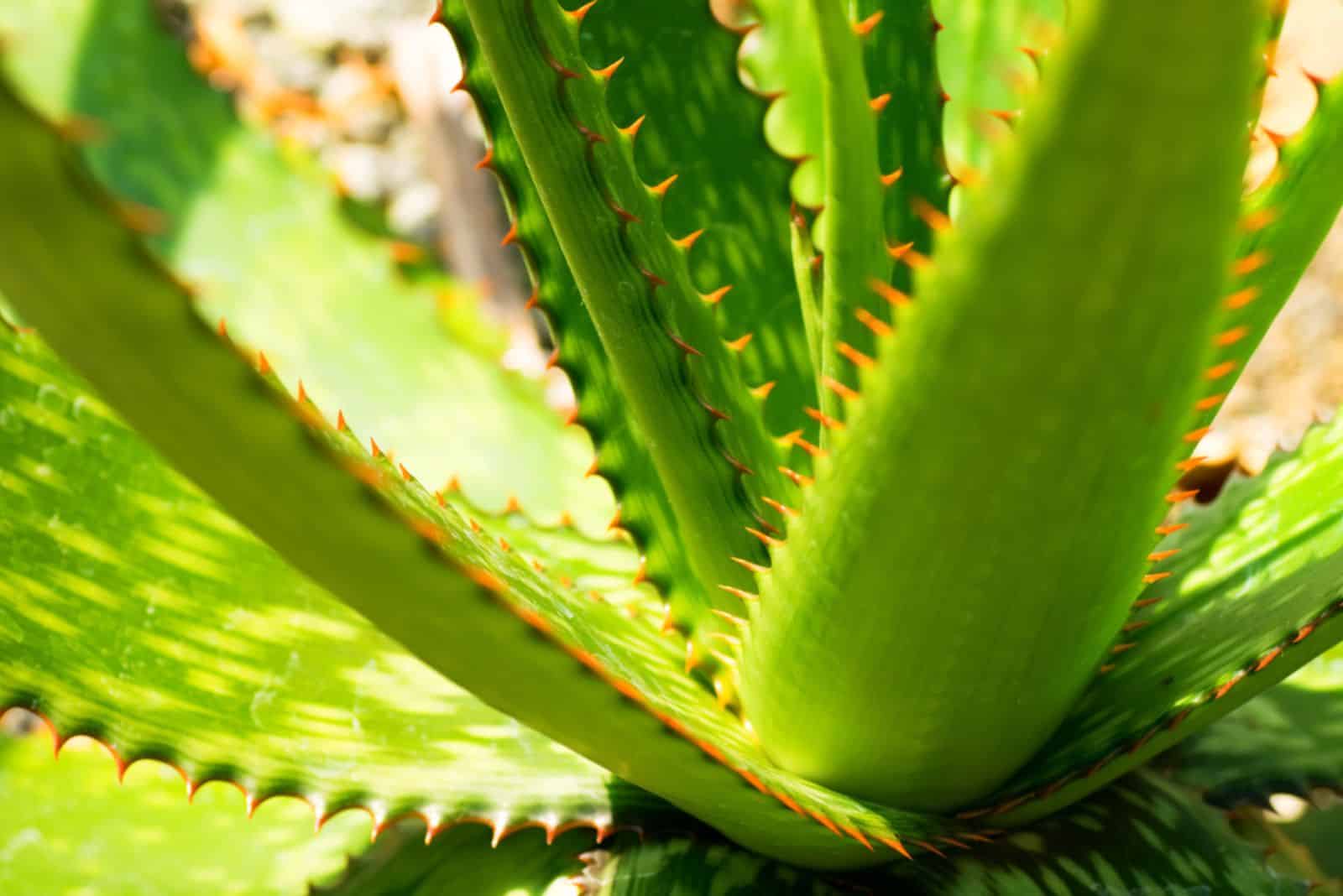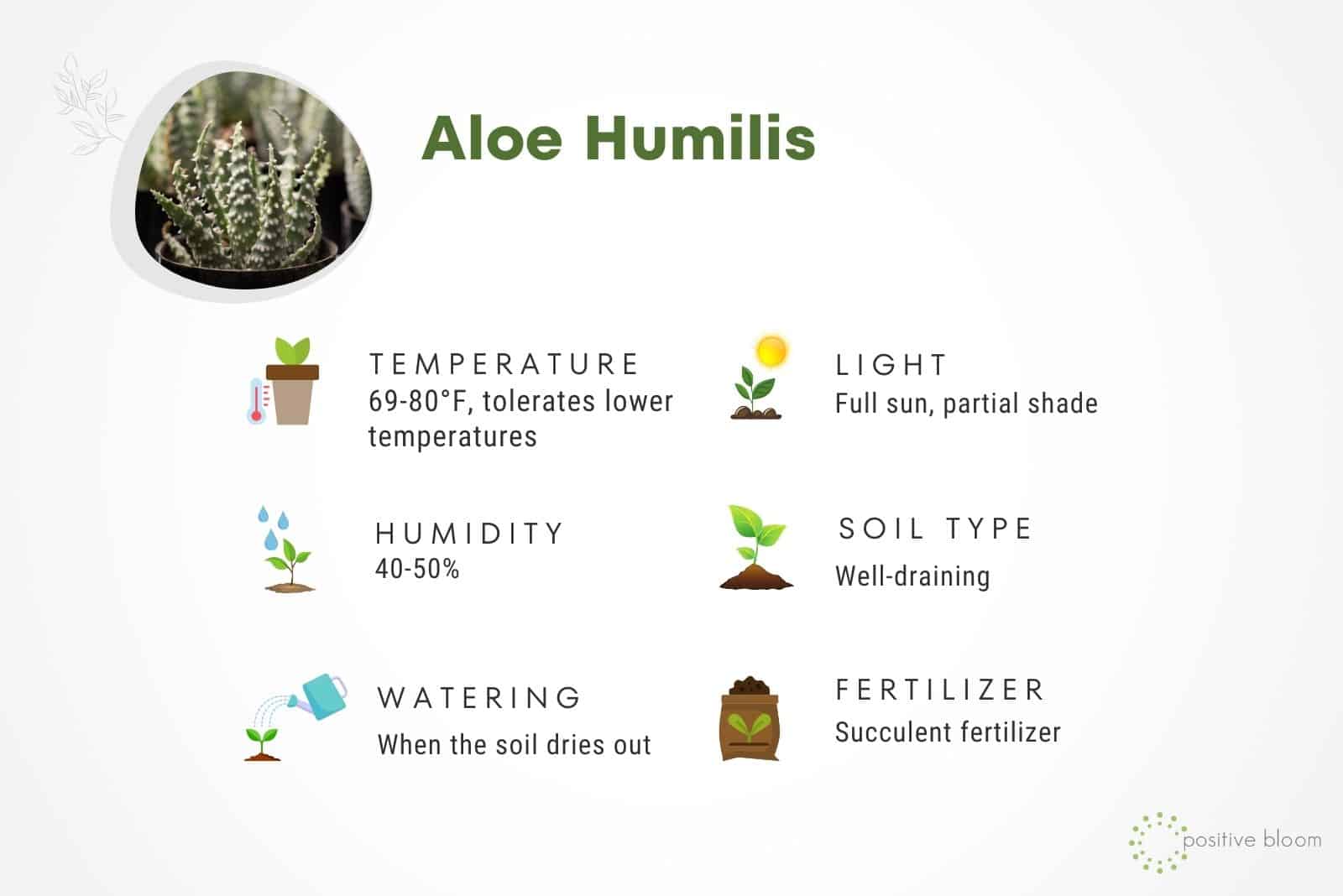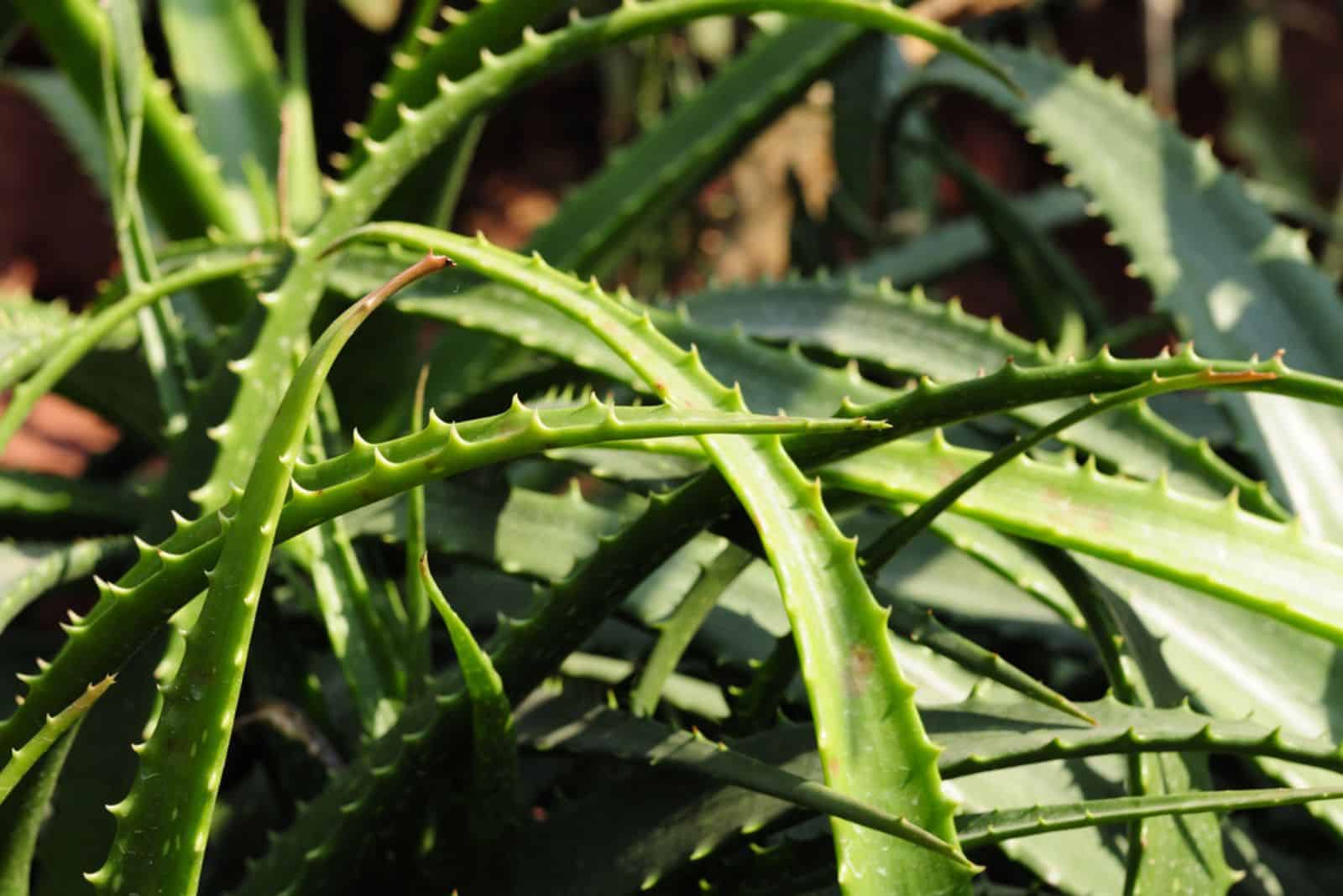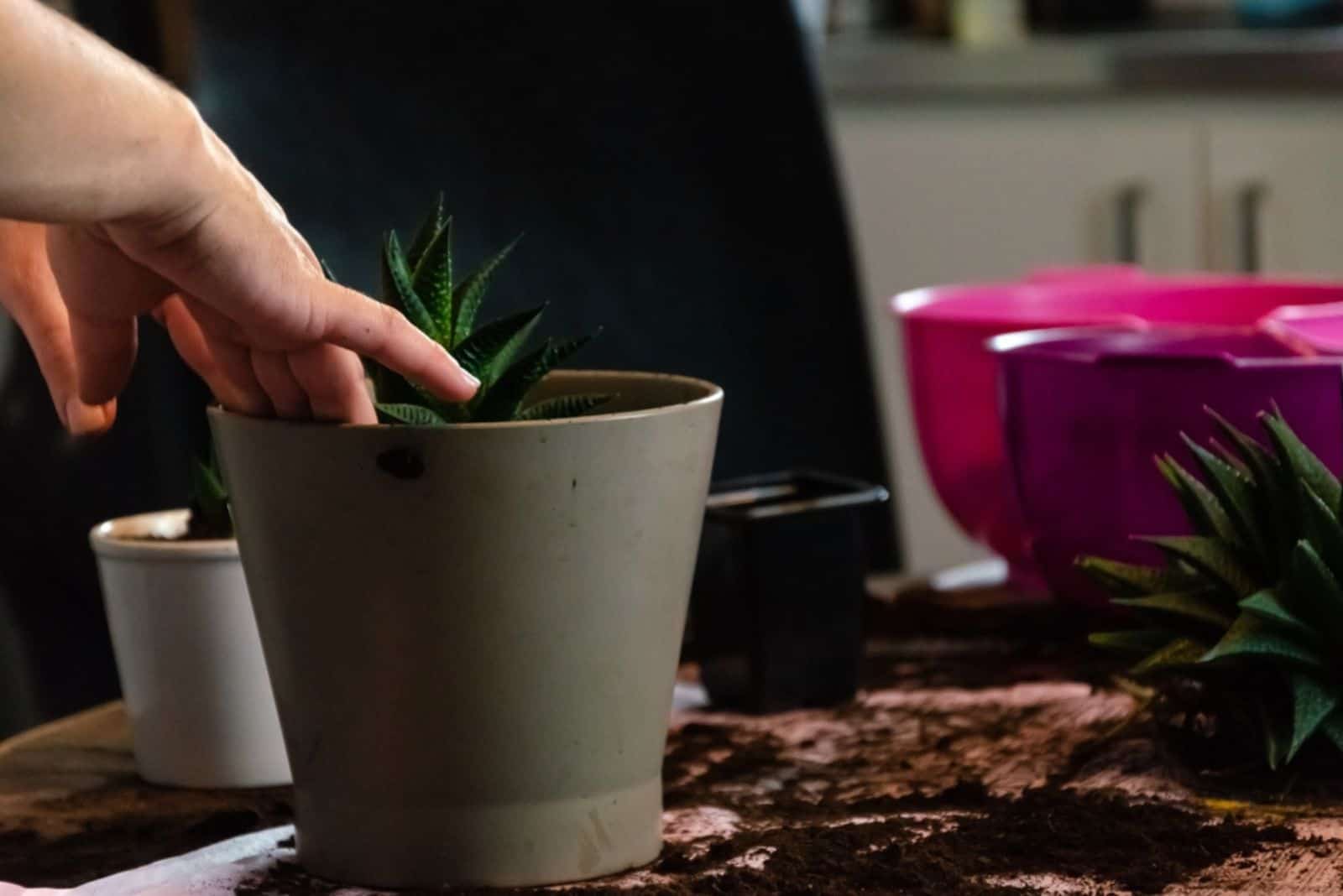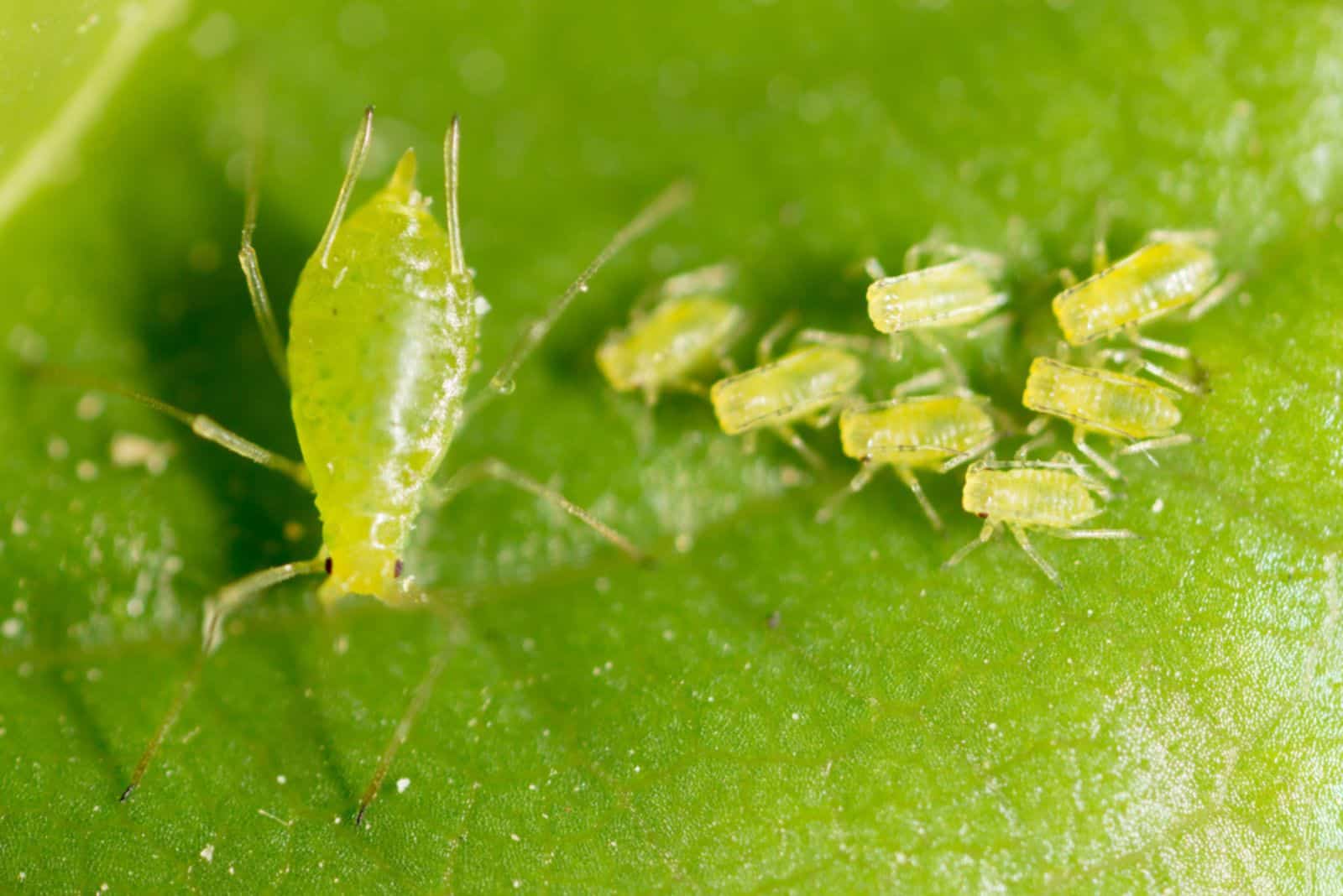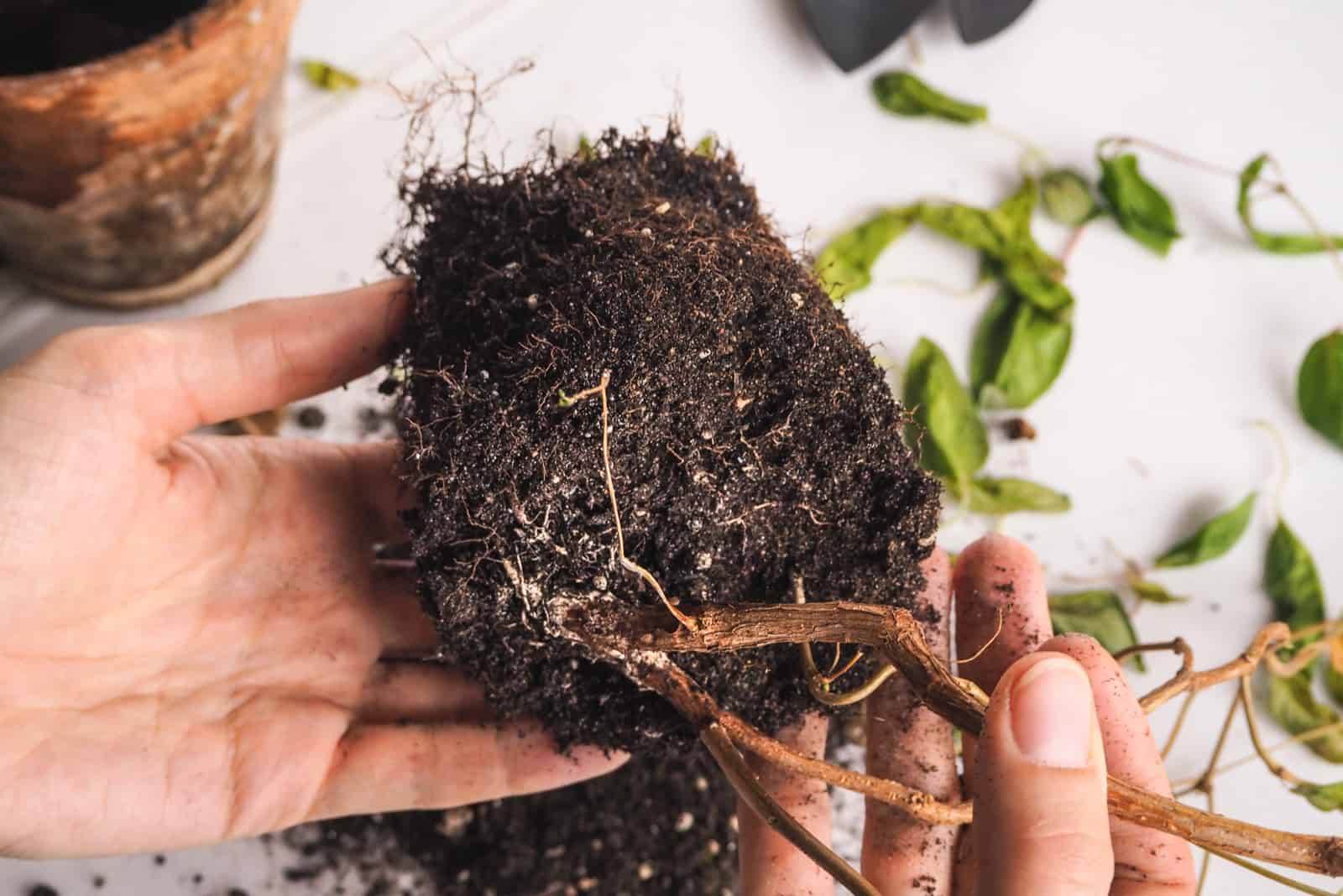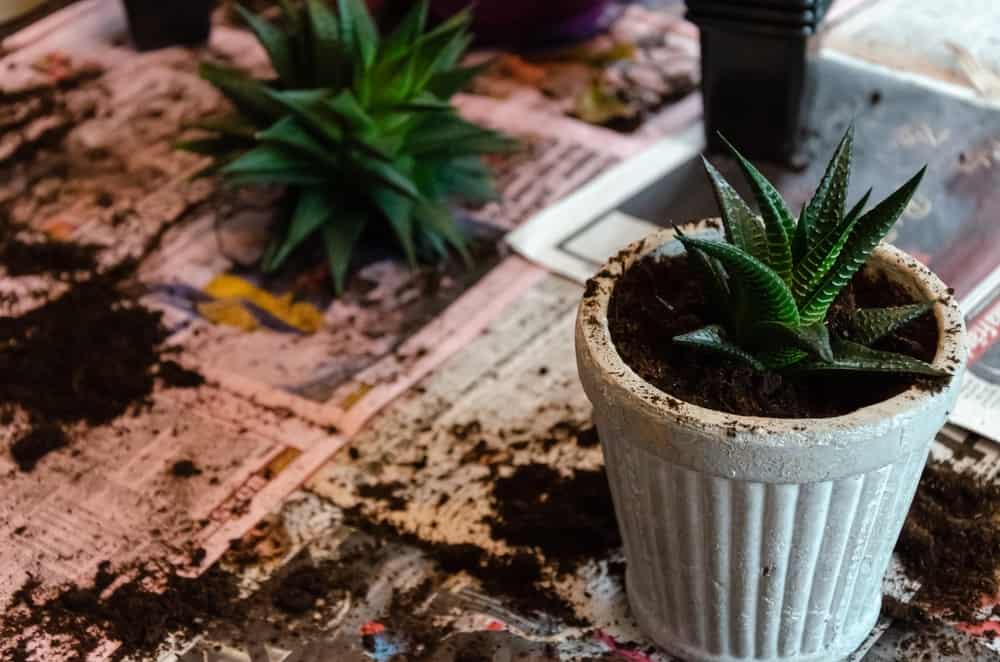Aloe there!
Today, we are going to talk about a unique Aloe plant called the Aloe humilis. In fact, this plant goes by many different names – Spider aloe, Hedgehog aloe, Crocodile jaws aloe, and Blue dwarf aloe are just some of the names for this Aloe plant.
However, it is scientifically known as the Aloe humilis, so you can lead with that!
This is a small succulent that produces clusters of dense, light green to blue pointy leaves with a lot of tiny bumps along their surfaces. It also produces beautiful long flowers with a prominent orange color.
Keep reading to learn more about this lovely, tiny plant!
[table id=645 /]
What Is The Aloe Humilis?
The Aloe humilis is a unique low-growing succulent, and due to its simple cultivation and maintenance, is among the favorite plants of avid collectors.
This small succulent belongs to the Asphodelaceae family. The Latin word “humilis” stands for dwarf or low-growing plant, which refers to their small sizes.
It is not listed as toxic to humans and pets.
Origin
These tiny succulent plants are native to regions of Northern, Western, and Eastern Capes in South America. However, they can be found all over the world nowadays; I’m sure that you could find them in your local garden shop!
Growth Habits
As you may already know, succulents are usually slow-growing plants. This also applies to our Aloe humilis!
You won’t have to worry about repotting it frequently, and you will only get to enjoy those dense, spiky leaves after some time since they are slow growers.
Appearance
Better known as spider aloe, this plant with its distinctive aloe appearance, spiky leaves colored in various shades of green and white, as well as an elongated orange flower, is one of the most beautiful of this family, which has its roots in South African countries.
It opens its beautiful flower at the end of the winter period and keeps it open until the beginning of the spring season. The colors vary from bright yellow to orange and red. They are useful for attracting pollinators and beneficial insects.
The leaves are usually triangular, and those tiny white bumps on the leaves appear randomly. These pale green leaves might turn red once the fall arrives.
Plant Size
We already mentioned that this plant stays relatively small. It usually grows up to 8 inches tall, though it can reach up to 16 inches after some time – that is, if it has been kept in an appropriate environment.
The Rosette can reach a diameter of up to 8 inches. The leaves are up to 4.8 inches long and 0.7 inches wide, triangular, erect, or incurved. From late winter to early spring, a 14-inch-tall spike with pendulous, 2-inch-long, crimson to orange flowers appears.
Aloe Humilis Plant Care Guide
The Aloe humilis is ideal for those who forget or don’t care too much about watering their plants, because this succulent requires watering only once a month during the winter days. It needs a little more during the summer, but still nothing excessive. In order to keep this plant alive, it is best to keep it in a place where it gets enough sunlight.
Taking care of Aloe plants is relatively easy. Most of them have similar requirements, such as Aloe ferox and Aloe vera, however, you should still take into consideration that different varieties might have unique requirements.
Let’s take a look at the plant care guide in more detail.
Soil Requirements
Aloe plants usually require well-draining soil in order to grow and thrive. The good news is that you won’t have to bang your head against the wall attempting to mix the ideal mixture because there is soil made specifically for succulents.
Don’t add too much compost because this aloe species requires a growing medium with proper drainage and moderate nutrition.
By combining perlite, sand, bark, and other coarse materials that don’t retain water for an extended period of time, you can make your own soil mixture. Peat moss should also be included because it absorbs moisture and releases it when a plant needs it.
Water Requirements
An overwatered Aloe plant is the most common issue when it comes to growing succulents. Since these plants can retain moisture in their leaves, they don’t need that much water.
I would recommend you water your Dwarf blue aloe once the soil has completely dried out. Water the plant thoroughly. It usually takes about 3 weeks for the soil to dry out, though it depends on other factors such as humidity and temperature.
This plant is drought tolerant and can go for some time without water. However, you shouldn’t leave it without water for too long or you might end up dealing with an underwatered Aloe plant.
Light Requirements
These plants grow best when exposed to full sun, though they can adapt to growing in partial shade.
To keep it robust and healthy, you should put it on a sunny windowsill or at the very least under some grow lights. They can grow perfectly fine near a south-facing window.
Keep in mind that these plants will become leggy, weak, and unable to sustain their fleshy leaves if they do not receive enough sunshine.
If you grow your plant outdoors, it’s better to keep it in partial shade to protect it from the scorching sun during summertime.
Temperature Requirements
Most Aloe plants require warm temperatures, and the Aloe humilis is not an exception. This plant thrives in a temperature range from 69 to 80 degrees Fahrenheit.
However, this unique Aloe variety can also tolerate temperatures as low as 25 degrees Fahrenheit.
If you don’t live in the appropriate USDA hardness zones, then you shouldn’t grow your Aloe outdoors. Once these plants are exposed to temperatures that are too cold, it might be really tricky to nurture them back to health.
Humidity Requirements
Although they can handle home humidity levels of up to 40–50%, these plants do best in low humidity environments. Therefore, you won’t have to spend money on humidity or mist your plants regularly.
Most succulents can adapt to low humidity conditions, which is why they are considered to be one of the easiest plants to grow. If you want to learn more about succulents and humidity, then check out: Do Succulents Like Humidity? It’s Time To Find Out
Fertilizer Requirements
Although these plants don’t need highly fertile soil, it is still advisable to fertilize them occasionally to prevent nutrient deficiencies.
You can feed these plants with a succulent fertilizer once or twice a year because they don’t require a lot of fertilizer. Be careful to always abide by the directions on the packaging.
Finally, only fertilize this plant when it is actively developing because it cannot absorb the food you provide it when it is dormant in the winter.
Repotting
Since aloe plants grow slowly, you won’t need to repot them very frequently. However, you should repot them with new soil if you see that their soil mixture has deteriorated or that there are too many pups.
Spring, when they begin to grow again actively, is the ideal time to repot your Aloe humilis. They can prepare for the winter and get stronger after repotting.
Pruning
Since Spider aloe plants are slow growers, you won’t have to worry about pruning them religiously. You should remove any dead or decaying leaves to keep the plant looking nice and tidy.
Pruning can also encourage new growth and development.
You should regularly trim the stem of your aloe plant in addition to removing dead leaves to prevent it from growing too lanky.
Propagation
Propagating Aloe plants is quite easy. They are propagated via offshoots or pups. Here’s how you do it:
1. Look for pups or offshoots at the plant’s base that resemble little Aloe plants. These offshoots ought to be healthy and suitable for propagation even if the plant has undergone water stress.
2. If you notice pups, you should begin removing your plant’s roots from the pot. It is simple to identify these offshoots.
3. You can use a knife or a pair of clean gardening shears to remove these tiny pups.
4. These cuttings can be inserted into either soil or water.
5. Your baby Aloe plant has to be replanted in a new container with drainage holes in the bottom and enough soil to mix thoroughly. Keep it in a dry spot with indirect light and water it when the soil seems dry.
6. If your overwatered aloe plant has any healthy leaves, you can reproduce it using leaf cuttings. This procedure is the same as for any leaf cutting propagation.
Common Issues With The Aloe Humilis
Aloes are usually hardy plants, but they are still susceptible to pests and diseases, especially if you don’t take proper care of them. My Aloe vera leaves started bending due to an inadequate soil type, so take every precaution to protect your plant!
Pest Infestation
Succulents are usually resistant to various pests. However, mealybugs, aphids, spider mites, and scales are good fighters that can infest these hardy plants as well!
Mealybugs are typically identified by dry white spots all over the plant. Scales have distinctly visible brown, disc-shaped bodies. These insects occasionally have a waxy coating that gives them the appearance of white cottony tufts stuck to those fleshy leaves. These bugs adore eating your plant and taking all of its nutrients!
Even though these plants are called Spider aloe plants, spider mites are still not welcome here! Spider mites are tiny and only visible under a microscope or with a magnifying glass. They usually reside on the undersides of the leaves, and they also leave silky webbings all over your plant. Aphids colonize the undersides of the leaves, and they are identified by their soft, white bodies. These pests also suck plant juices.
How To Fix A Pest Infestation
Mealybugs are easily treated with neem oil or insecticidal soap. Scales are typically removed by vigorously spraying the insects off plants. If the infestation is severe or the insects come back, an application of insecticidal soap can be helpful. By regularly spraying or washing the plant, you can keep spider mites at bay.
To get rid of these annoyances, you can even use rubbing alcohol, but I typically prefer neem oil or another sort of organic pest control.
Plant Diseases
Overwatering is the primary cause of root rot, a fungal disease that can permanently harm your aloe plant by preventing its roots from obtaining all of the vital nutrients they require to survive.
Overwatering and bent leaves are typically the first symptoms of root rot, which are frequently followed by smelly soil and squishy roots.
However, dry rot is a different fungus that resembles root rot in certain ways.
A fatal fungal disease that can go undiscovered for some time is dry rot. The disease will eventually cause the leaves to start bending and turning brown, but the inside of your plant is actually suffering far more!
This fungus completely dries out the plant on the inside, which interferes with normal water and nutrient flow through the plant’s vascular system.
How To Fix Plant Diseases
The best solution to root rot is repotting your plant. Dry rot makes it nearly impossible to salvage the plant because it can quickly spread throughout the entire thing. The best way to prevent root rot is to provide good growing conditions for your plant.
Here is how you deal with root rot:
• Remove the plant from the pot to check the roots.
• As soon as you notice any black or brown, rotting roots, clip them out, being especially careful not to damage any good roots or offshoots in the process. Use only sterilized pruning shears.
• You should use a fungicide to prevent the disease from developing again. Although you can also use copper fungicide or neem oil, I suggest you spray the roots and the new pot with hydrogen peroxide.
• Use fresh potting soil mix as the previous one will be contaminated with fungi.
Yellow & Brown Leaves
It is never a good feeling to see those pretty Aloe leaves yellowing and browning. There can be several reasons why this happens. First of all, yellow leaves are signs of overwatering. Frequent watering first affects the leaves, and if you don’t ease up with the watering, root rot develops.
Other reasons might be that the humidity is too high, which can also cause overwatering.
Brown leaf tips usually indicate overfertilization. If you give the plant more plant food than it needs, excess salts and chemicals will build up in the soil. This will prevent the roots from absorbing water and nutrients.
Too much sun exposure might also lead to sunburned and brown leaves. Keep your plant in partial shade if the sun is too strong during the day.
Frequently Asked Questions
1. Is the Aloe Humilis poisonous?
No, the Aloe humilis is not poisonous. It is not toxic to humans or pets, so it is perfectly safe to keep it anywhere in the house!
2. How do you take care of an Aloe humilis?
Taking care of an Aloe humilis is relatively easy. All you have to do is water them once the soil has completely dried out, keep the plant in well-draining soil, and fertilize it lightly during the growing season.
The temperature should range from 69 to 80 degrees Fahrenheit, though it can tolerate temperatures as low as 25 degrees Fahrenheit. The humidity should be moderate. This plant can grow in full sun and partial shade.
To Sum Up
The Aloe humilis is definitely a plant that everyone should get. It doesn’t take up a lot of space, requires minimal maintenance, and looks absolutely adorable!
Those spiky, light green leaves with tiny white bumps all over really make the plant look so unique and chic. Since it is a slow growing plant, you won’t even have to worry about repotting and pruning regularly.
Keep an eye out for those pesky pests, and immediately repot the plant if you suspect that it might be suffering from root rot.
That’s all, folks. I hope this article was helpful.
Until next time!


